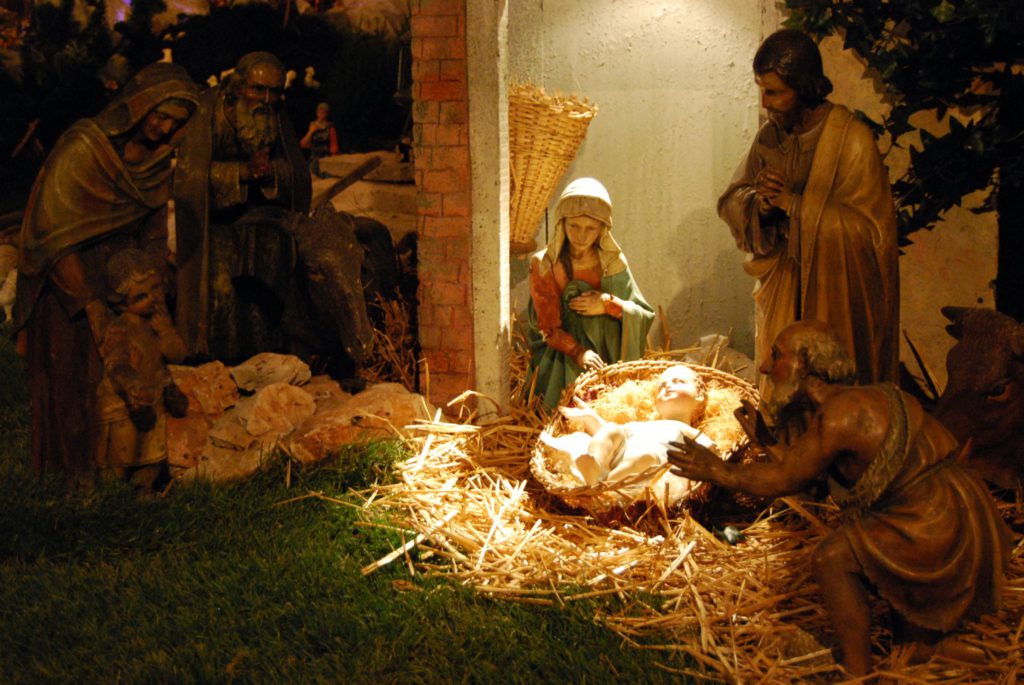In the Venetian tradition on December 25th the children did not wait for the arrival of Santa Claus coming down from the North Pole with the sleigh loaded with gifts, but they waited for the Befana called Maràntega who filled the children’s socks with mandarins, peanuts, some sweets, candies and bits of coal.
Legend has it that the Three Wise Men, in search of the Child Jesus, stopped to ask the way for a good old woman (who knew nothing about Little Child and could not indicate the way to follow); Gaspare, Melchiorre and Baldassarre, the three Wise Men, left immediately in a hurry, too quickly for the poor old woman who wanted to follow them and bring her little gifts to the Child Jesus too; but the Wise Men had already left and from that moment the poor Befana, who never arrived in the hut of the Birth (or Presèpio), continues to look for the Little Child all over the world, always leaving good children all the gifts she always carries with her ( in the hope that among them the Child Jesus is also found).

Fotoattualità. Befana Regatta
Moreover, the Christmas tree was not used to decorate with lights and colored balls, but in every home, rich or poor, in the days before Christmas the Presèpio was made (of Franciscan memory: in fact the first presepio was wanted and implemented by San Francesco in the little church of Greccio, aD 1223;) and it is done with the help of the children: the little lake made with a fragment of mirror with the little geese on it, the crepe paper for the cave, the star cut out of a silver cardboard, a little bit of flour for snow …
In this regard, even today, there are some beautiful cribs in some churches during this period: Chiesa di San Trovaso, Chiesa dei Frari, Basilica di San Marco.

Since the twelfth century and since the Doge of Ordelaffo Falier, in Venice the celebrations for Christmas lasted until December 26, St. Stephen’s Day: after listening to the evening mass of December 25 in the Basilica of San Marco, the Doge with all his entourage crossed the basin of San Marco to reach the nearby island of San Giorgio Maggiore.
In the church of the same name the doge venerated the relics of St. Stephen protomartire, kept there since 1109. During the following day the Doge banqueted with all his following in Piazza San Marco while nobles and commoners paraded masked. In fact, the day of Santo Stefano marked the beginning of the Venice Carnival, which ended on Ash Wednesday (in March or April). (from Rerum Italicarum Scriptores)
RECIPE:
Christmas Eve Dinner (the doses are not marked)
Appetizers: Creamed cod (baccalà) served on slices of polenta; cape sante; schie read.
For the dinner: boil a nice bòsega putting in the pan carrot, celery, onion and a bay leaf.
Once cooked, clean it and place it on a plate that you will place on top of a pot where you will boil a little hot water so that the steam keeps its temperature.
In a large saucepan, fry a little chopped onion in a little oil and on low heat; then pour the rice, which should be beaded, for the necessary time, and blend it with a little ‘dry white wine adding, a little’ time, the broth in which the bòsega was cooked.
When the rice is almost cooked, mix it with a little of the bòsega pulp, (not too much to prevent the rice from becoming “stringy”), then add a little butter to whisk it and a small piece of Parmesan cheese.
Serve hot.
The boiled bòsega, which you had left waiting, will be served, as a main course, surrounded by a garland of boiled potatoes: all embellished and flavored with sprigs of parsley; naturally the dish should be seasoned with a little oil.
You can use a good mayonnaise as a sauce.
Merry Christmas to everyone and in particular to the Venetian chef Aldo Cucco.

